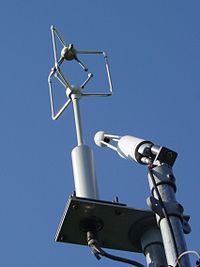
Photo from wikipedia
Abstract Eddy covariance is increasingly used to monitor cattle emissions. However, the turbulent flux calculation method and the footprint models upon which calculations are based are insufficiently validated. In addition,… Click to show full abstract
Abstract Eddy covariance is increasingly used to monitor cattle emissions. However, the turbulent flux calculation method and the footprint models upon which calculations are based are insufficiently validated. In addition, available footprint models presume the source to be placed at soil height, which is obviously not the case for cattle. The present study uses a single known artificial point source placed at cow’s muzzle height in order to assess the impact of the flux calculation method (averaging method, averaging period, quality filters) and of the footprint model on the emission estimates. The optimal calculation method and footprint model combination (running mean, 15 min averaging periods, no application of the Foken and Wichura (1996) stationarity filter, and the use of the Kormann and Meixner (2001) footprint function) led to estimated emissions between 90 and 113% of the true emission, leading to the conclusion that the use of eddy-covariance for point-source emission estimation is feasible provided an adequate calculation method is selected.
Journal Title: Agricultural and Forest Meteorology
Year Published: 2019
Link to full text (if available)
Share on Social Media: Sign Up to like & get
recommendations!